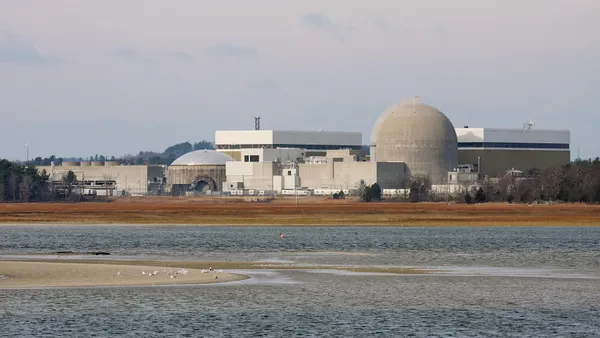The PJM Power Providers Group, a trade group for power plant owners also known as P3, on Friday urged the Federal Energy Regulatory Commission to reject the PJM Interconnection’s proposal to revise key inputs to its capacity market.
On the same day, Sierra Club, other environmental groups and ratepayer advocates jointly backed PJM’s plan, saying it was a step toward reducing the grid operator’s purchase of more capacity than it needs.
The debate centers on the PJM’s “variable resource requirement” curve, which the grid operator uses to help determine how much capacity it purchases in what are usually annual capacity auctions.
Policy analysts have expressed concerns, echoed by state utility regulators, that PJM buys more capacity than it needs to maintain grid reliability, driving up consumer costs.
Following a stakeholder process that occurs every four years, PJM on Sept. 30 proposed a new set of parameters for it to use to create the VRR curve. The changes should lead to reduced capacity procurements while meeting reliability needs and lowering costs, PJM said in the filing.
PJM asked FERC to let the new parameters take effect by Dec. 1 so it can use them in the grid operator’s capacity auction for the 2026-2027 delivery year. The auction is set to be held in November 2023.
In the PJM’s most recent capacity auction, held in June, the grid operator bought 144,871 MW of capacity for the capacity year that starts June 1 for about $2.2 billion, down from $4 billion in the previous auction. The PJM uses the auctions to help make sure it has enough power supplies three years in advance to serve the roughly 65 million people that live in its Mid-Atlantic and Midwest footprint.
However, P3 contends the PJM’s proposed update to its capacity market parameters will deepen an existing market crisis and make it harder for the grid operator to maintain a reliable power system.
“The proposed changes to the VRR curve continue a pattern of complete devaluation and corruption of a market established to compensate investment in long-term capacity resources,” the trade group said, pointing to regulatory decisions that changed the grid operator’s offer cap rules and its minimum offer price rule.
The PJM and neighboring power markets are on the brink of a reliability crisis, in part because of the addition of intermittent wind and solar resources, said P3, whose members own about 67,000 MW in the grid operator’s footprint.
“PJM is faced with the prospect of continued retirements of baseload resources, increasing pressure on demand from data center proliferation, electric vehicles and all electric buildings, integration of intermittent resources, and no meaningful market signal for the unsubsidized resources required to enter the market that are objectively needed for reliability,” the trade group said.
FERC should direct the PJM to maintain its existing VRR curve, according to P3.
Environmental groups and ratepayer advocates asked FERC to approve the PJM’s proposal, which they said will benefit consumers and the environment, but to also order additional changes to its capacity market framework.
The PJM has bought more capacity than its targeted reserve margin over at least the last decade, which has distorted market signals, leading older, inefficient and polluting power plants to continue operating, according to the filing.
“PJM’s over-procurement of capacity also often functions as a subsidy for fossil-fuel power plants that exacerbate climate change and harm the environment and disadvantaged communities through emissions of pollutants,” the groups said.
The coalition consists of Sierra Club, the Illinois Citizens Utility Board, the New Jersey Division of Rate Counsel, the Maryland Office of People’s Counsel, the Office of the People’s Counsel for the District of Columbia, the Delaware Division of the Public Advocate, PennFuture, Southern Environmental Law Center, Natural Resources Defense Council and the Sustainable FERC Project.
The Organization of PJM States, which represents state utility regulators, told FERC it supports an alternative proposal considered in the stakeholder project that would have addressed the overprocurement issue more effectively than the grid operator’s proposal.























